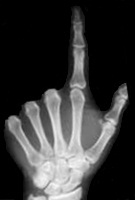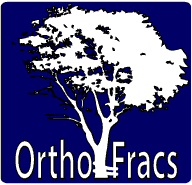Journal Club
May 2010
Arthroscopic femoral osteochondroplasty for cam lesions with isolated acetabular chondral damage
- Authors: B. Haviv, P. J. Singh, A. Takla, J. O’Donnell
- Institution: St Vincents and Mercy Private Hospital, Melbourne, Victoria, Australia
- Journal: J Bone Joint Surg [Br] 2010;92-B:629-33. VOL. 92-B, No. 5, MAY 2010
Reviewed by
Dr Nathan White
MBBS | Unaccredited Orthopaedic Registrar
Introduction
- Purpose:
- To evaluate the outcome of femoral osteochondroplasty for cam lesions in relation to the stage of acetabular chondral damage in the absence of other intra-articular pathology
- Hypothesis:
- Improving mechanical properties by femoral osteochondroplasty is beneficial in the presence of acetabular chondral damage
Methodology
- Retrospective case series 170 hips (166 pt)
- Single surgeon
- Standardised operative and rehab protocol
- Greater than 12 months follow up
- Outcomes: Modified Harris Hip Score, Non Arthritic Hip Score
- Single surgeon
- Patient selection:
- “Cam lesions and acetabular chondral damage”
- Hip pain and mechanical symptoms
- Painful ROM and impingement on examination
- Confirmed on xray and CT in position of functional impingement
- Unresponsive to 12 weeks nonoperative management (unspecified)
- Advanced arthritis, other pathology at surgery excluded
- “Cam lesions and acetabular chondral damage”
Operative technique
| Grade | Description |
|---|---|
| I | small, partial thickness |
| II | full thickness, <30% width from acetabular edge to fovea |
| III | full thickness, >30% |
| Grade | Treatment |
|---|---|
| I | radiofrequency ablation |
| II & III | debridement of unstable flaps |
| II & III <300mm² | microfracture |
- Femoral osteochondroplasty
- Followed by reassessment under II to ensure adequate resection
- Post op management:
- Weight bearing as tolerated
- Physiotherapy
- Activity modification
- Jogging & running after 8/52 (microfracture 14-16/52)
- Weight bearing as tolerated
- Statistical Analysis
- Student’s t test for paired measures
- One way ANOVA to assess effect of degree of chondral damage on outcome
- Pearson’s correlation coefficient: chondral damage and scores
- Student’s t test for paired measures
Results
- 135 of 170 hips were either grade II or III
- Ages ranged from 14 to 78.
- Better preoperative scores correlated with less damage and better outcome
- All groups improved significantly
- Most improvement was seen in younger patients with less damage at operation
- Ages ranged from 14 to 78.
- MHHS & NAHS over time
- Grade I damage showed improvement continuing over twelve months of follow up
- Grade II and III showed early improvement however plateaued early.
- Grade I damage showed improvement continuing over twelve months of follow up
- Microfracture
- Subgroup of patients since 2007 with grade II and III lesions under 300mm²
- Again, improved noted in grade II and III with or without microfracture
- Most notable improvement in NAHS was with microfracture group
- Subgroup of patients since 2007 with grade II and III lesions under 300mm²
Discussion
- The all-arthroscopic technique of femoral osteochondroplasty enables better function and patient satisfaction
- authors observed a continued improvement in the hip scores throughout the first year.
- cam impingement
- bony prominence at the femoral neck produces mainly mechanical limitation
- chondral damage and reactive synovitis are responsible for a significant proportion of the
pain - synovitis is localised and most commonly found in the anterosuperior part of the acetabulum,
which coincides with the area of chondral damage.
Pros of Study
- Interesting local paper
- Significant contribution to literature
- Confirmed functional impingement intraoperatively
- Clear grading and surgical method
- Prescriptive, multidisciplinary approach to treatment and rehab
- Avoided distracting debate
Cons of Study
- Lack of control group
- 4 key components:
- Non operative
- Osteochondroplasty vs debridement vs microfracture
- Non operative
- 4 key components:
- Mixed, poorly described patient group
- Poor generalisability
- No clear recommendations: however appropriate to level of study
- Insufficient recognition of contentious issues
Take home message
Arthroscopic femoral osteochondroplasty for cam impingement with microfracture in selected cases is beneficial. The outcome correlates with the severity of acetabular chondral damage
Better results in younger patients with less severe damage
An emerging area of practice with good biomechanical rationale but little evidence base thus far.
Webpage Last Modified:
24 May, 2010



